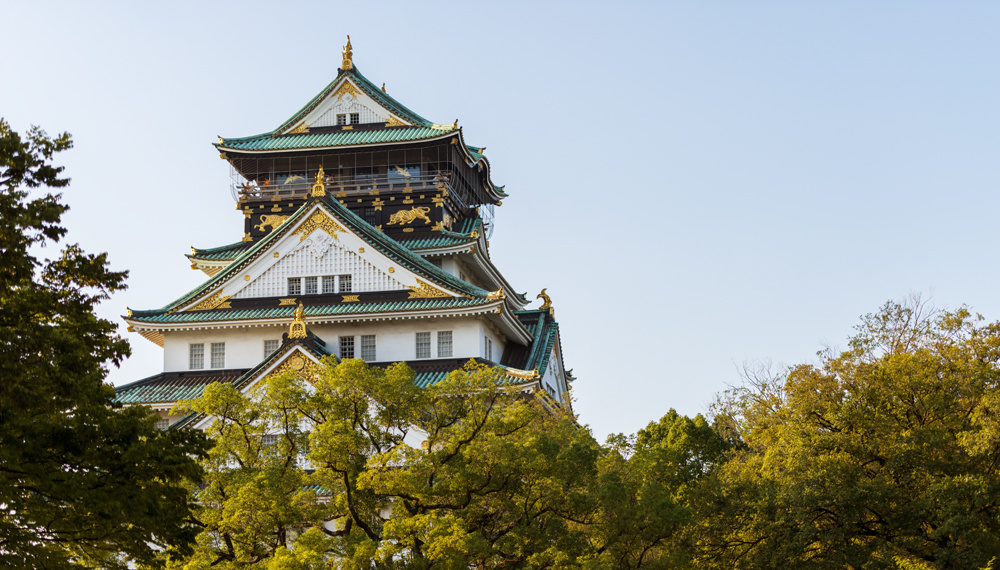Here is the why and how I recommend you photograph the sky.
It's important to have your own personal library in which you can use to replace the sky in your future photos (or older ones), because let's face it, sometimes, you go photograph a landscape, landmark, cityscape, people, or even products, and the sky is overcast or without any clouds or drama.
There is nothing wrong with a blue sky without clouds or a sunset or sunrise without any, but sometimes, having some clouds can increase the quality of the photo. However, the weather does not cooperate all the time to give you the perfect sky with beautiful clouds.
Below is a photo that I took when I was living in Japan of the Osaka's Temple with the sky without any clouds and one with added clouds, just to illustrate.
If you are against sky replacement or you are a purist type of person, there is nothing wrong with that, but you are limiting yourself and your photos in my opinion. When you see a beautiful sky with interesting clouds, why not take a few minutes to photograph it? It won't take that much time or storage space either. But of course, if you are photographing the sky to use later, you need to have some things in mind.
Don't point your camera up to photograph the sky, because it won't match properly later when replacing it (it's not impossible to make it this way, but it will give you more work, especially if the angle is way too different); instead, try focusing on the horizon, leaving a bit of the horizon on the bottom part of the photo. Make some photos with the sun in the frame, outside the frame, in the middle, on the right, on the left, and so on, and with that, you'll have a lot of options later to choose from.

And of course, sometimes, the sky is way too gorgeous, and just a photo of it can make a beautiful photo or print!









How could anyone tell if I pointed my camera at the sky? Assuming the sun isn’t in the photo?
Perspective I'd imagine.
When pointing at the horizon the clouds are usually layered, there is more of a depth feeling to it rather the from pointing right up to the sky, where the clouds are going to look pretty flat. In some cases one would want to have some photos with the camera pointed to the sky, e.g. when replacing skies of photos with extreme perspectives.
Thanks was curious.
This is a nice idea, and something I've sort of thought about doing, but have never gotten around to. I'm sure there are plenty of videos for this already and I'm sure a lot of people will think it's so simple it's unnecessary, but I think a good follow-up article would be explaining the editing process. I'm the first to admit I don't use Photoshop to its full potential, so it's always nice to learn new tricks.
Also, small question (possible nitpick) you said "Osaka's Temple" but the structure in the photo is Osaka Castle. Am I missing something?
If you google photoshop sky swap there is a ton of great tutorials. The problem you’ll notice with sloppy composite work is people that don’t fix white balance with their blends, or try to blend clouds without taking into account where the horizon is in each shot.
Yeah, I know, I'm just throwing some more article ideas out there, haha.
I know what you mean about shoddy edits.I think Peter Mckinnon did a video about it and posted an image on his Instagram last year or so, and it was so bad I finally decided to unfollow him.
I know this is months late but a real estate editor that I have chatted with a lot as an action panel specific for sky swapping. His name is Hunter Lomasyeva and he made an action called “Seamless”.
Highly recommend!
A good skybary is every real estate photographers dream. I often snap late afternoon skies for sky swaps.
Thanks, a nice short, effective, useful article.